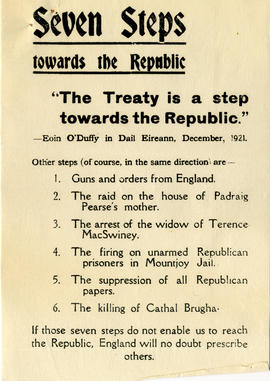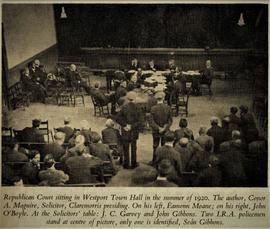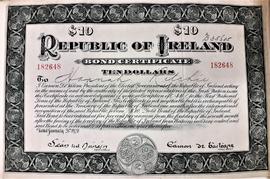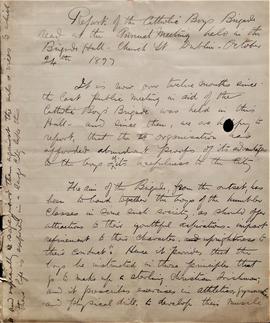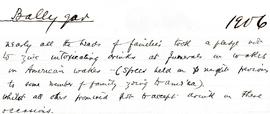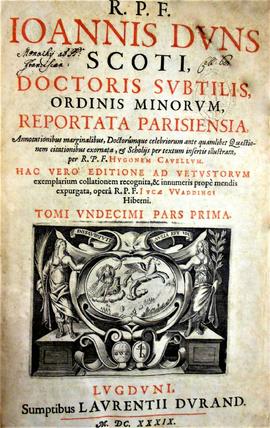- IE CA IR-1/7/3/4
- File
- c.1922
Part of Irish Capuchin Archives
Uniform handbills in the Republican interest, starting with:
The Murder Members. The following are the names of the members of the partition parliament who voted for the murder bill. Note: 2 copies; 1 leaf. 31 cm
Seven Steps towards the Republic; 1 p. 19 cm.
On the proper shoulders. At head of text: extracts from the Official Report of proceedings in the English House of Commons (Hansard, June 26th, 1922, Vol. 155, no. 84). 5 copies; [6] pp.; 22 cm.
The new terror ... homes raided in the dead of night; women and children terrorised ... These are some fruits of the Treaty. We will break this new terror as we broke the old. Make no doubt about it. Note: 1 p. 21 cm.
Conspiracy to murder. The Provisional Government has sent an agent to the south to assassinate Eamonn de Valera. The name of the agent is known. Is this done by the will of the Irish people? Note: 1 p. 17 cm.
Violation of Padraig Pearse's Home. Mrs. Pearse's words to the Free State soldiers; Note: 1 p. 26 cm.
To the Free State Soldiers. Anti-Treaty handbill (black typescript on buff coloured paper), urging Free State soldiers to lay down their arms. Urging the soldiers of the Provisional Government, which includes Arthur Griffith, not to take up arms and/or demean soldiers of the Irish Republic during the Irish Civil War. 1 p. 26 cm.
Murdered. On the murder of Harry Boland. Note: 2 pp; 26 cm.
Provisional Government Offer Valuable Prizes for the Best Answers to the following eighteen questions. Note: 2 copies; 1 leaf; 33 cm.
The Mountjoy “Hotel”. Note. 1 p. 27 cm.
Appeal to the People and Volunteers of Tirconaill. Note: 1 p.; 33 cm.
Resolutions adopted by Padraic Pearse Council A.A.R.I.R., Chicago, Illinois, published by the American Association for the Recognition of the Irish Republic. 14 Oct. 1922. Note: Printed, 4 pp.
Do you know Joe Clark? A leaflet, including the statement of Joseph Clark, on the crimes committed against him by the Free State authorities, dated 13 Nov. 1922. Note: 1 p.; 33 cm.

